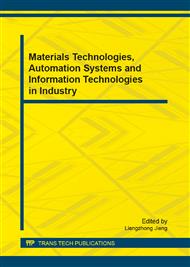p.494
p.501
p.507
p.513
p.519
p.524
p.529
p.533
p.542
Finite Element Analysis of Converter Tilting Mechanism Helical Gear Reducer in Abnormal Meshing Condition
Abstract:
Considering abnormal meshing condition of converter tilting mechanism helical gear reducer,creating 3D helical gear models under normal meshing condition and abnormal meshing condition. By using the finite element method to perform a nonlinear contact analysis on helical gear, the results of gear contact stress under different meshing conditions was obtained. It provides a theoretical basis for the accurate analysis of the reasons for the failure, the optimum design and safe use of the gear.
Info:
Periodical:
Pages:
519-523
Citation:
Online since:
August 2013
Authors:
Price:
Сopyright:
© 2013 Trans Tech Publications Ltd. All Rights Reserved
Share:
Citation:


